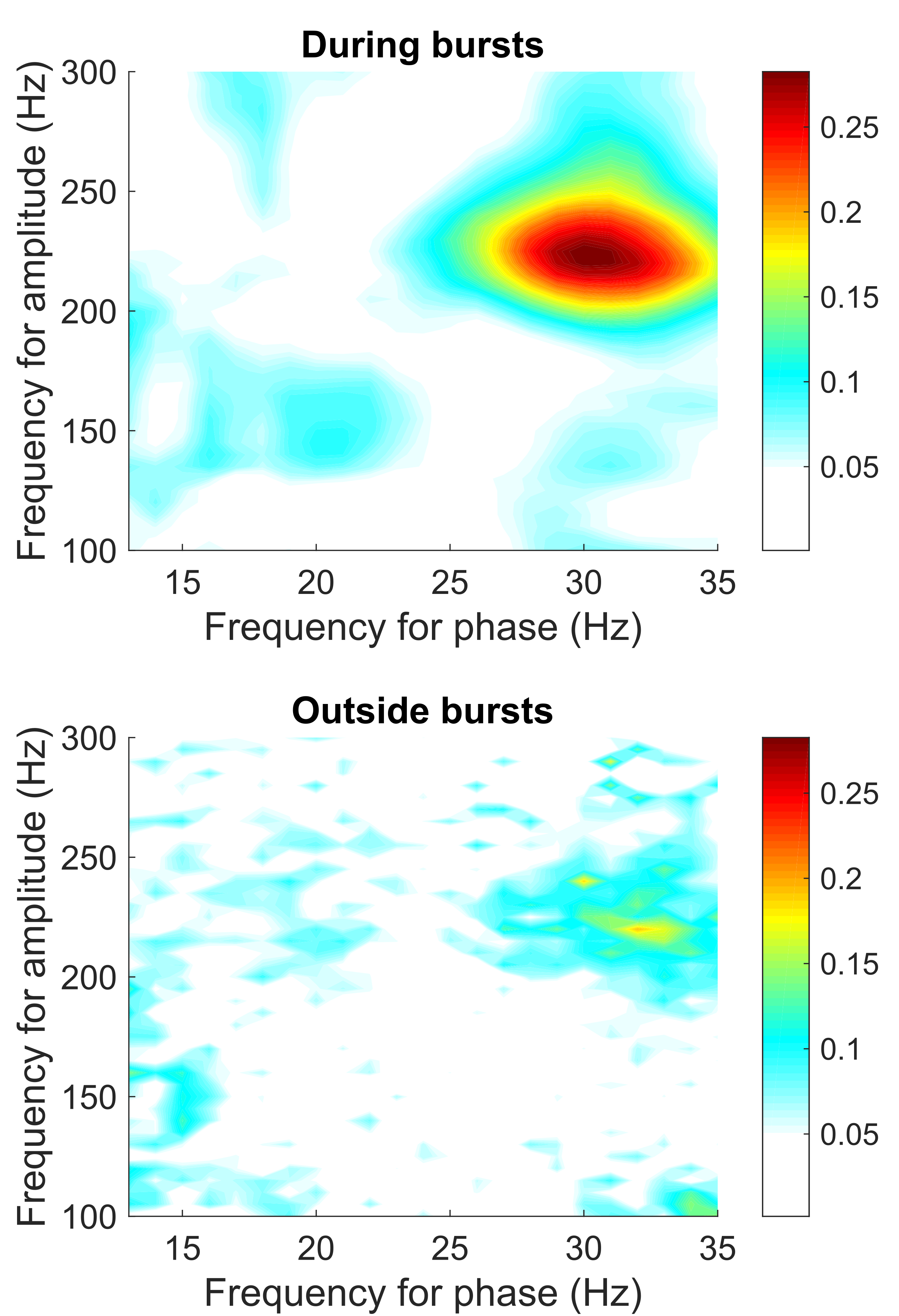Synchronised spiking activity underlies phase amplitude coupling in the subthalamic nucleus of Parkinson's disease patients.
Phase amplitude coupling (PAC) in the subthalamic nucleus local field potential (LFP), whereby the amplitude of high frequency oscillations is synchronised to the phase of beta oscillations, is proposed as a biomarker for Parkinson’s disease, but its neuronal origins are unclear. We show that PAC may reflect synchronisation between the spiking of STN neurons with beta oscillations in the LFP.
Both phase-amplitude coupling (PAC) and beta-bursts in the subthalamic nucleus have been significantly linked to symptom severity in Parkinson's disease (PD) in humans and emerged independently as competing biomarkers for closed-loop deep brain stimulation (DBS). However, the underlying nature of subthalamic PAC is poorly understood and its relationship with transient beta burst-events has not been investigated. To address this, we studied macro- and micro electrode recordings of local field potentials (LFPs) and single unit activity from 15 hemispheres in 10 PD patients undergoing DBS surgery. PAC between beta phase and high frequency oscillation (HFO) amplitude was compared to single unit firing rates, spike triggered averages, power spectral densities, inter spike intervals and phase-spike locking, and was studied in periods of beta-bursting. We found a significant synchronisation of spiking to HFOs and correlation of mean firing rates with HFO-amplitude when the latter was coupled to beta phase (i.e. in the presence of PAC). In the presence of PAC, single unit power spectra displayed peaks in the beta and HFO frequency range and the HFO frequency was correlated with that in the LFP. Furthermore, inter spike interval frequencies peaked in the same frequencies for which PAC was observed. Finally, PAC significantly increased with beta burst-duration. Our findings offer new insight in the pathology of Parkinson's disease by providing evidence that subthalamic PAC reflects the locking of spiking activity to network beta oscillations and that this coupling progressively increases with beta-burst duration. These findings suggest that beta-bursts capture periods of increased subthalamic input/output synchronisation in the beta frequency range and have important implications for therapeutic closed-loop DBS.

2025. Mov Disord, 40(12):2641-2653.
2024. Neurobiol Dis, 201:106652.